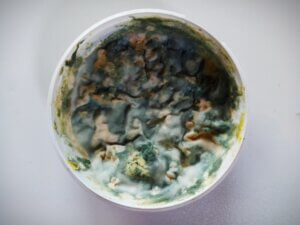AllAces | Effective Mould Cleaning for Respiratory Health
Effective Mould Cleaning for Respiratory Health
Summary
In this article, we explore the importance of effective mould cleaning for respiratory health. Mould, a fungus that thrives in damp conditions, can lead to various respiratory issues when its spores are inhaled. We discuss common respiratory problems linked to mould exposure, such as allergies, asthma exacerbation, and respiratory infections. The article also outlines essential techniques for mould cleaning, including identifying sources, using protective gear, proper ventilation, approved cleaning solutions, thorough cleaning, disposal of contaminated materials, and prevention measures.
We, as experts in the field of mould cleaning, understand the critical importance of maintaining a clean and mould-free environment, especially when it comes to respiratory health. Mould is not just unsightly; it can pose serious health risks, particularly to individuals with respiratory issues. In this comprehensive guide, we will delve into the various aspects of effective mould cleaning for respiratory health, providing you with valuable insights and practical tips to ensure a healthy living space.
Understanding the Respiratory Impact of Mould
Mould is a type of fungus that thrives in damp and humid conditions. It can be found in various forms, such as black mould (Stachybotrys Chartarum) or common household mould (Aspergillus or Penicillium). When mould spores become airborne, they can be inhaled, leading to potential respiratory problems.
Common Respiratory Issues Linked to Mould Exposure
- Allergies
Mould spores are known allergens that can trigger allergic reactions in sensitive individuals. Common symptoms include sneezing, runny or stuffy nose, itchy or watery eyes, and skin rashes.
- Asthma
For those with asthma, mould exposure can exacerbate their symptoms, causing wheezing, coughing, chest tightness, and difficulty breathing.
- Respiratory Infections
Inhaling mould spores can increase the risk of respiratory infections, particularly in individuals with compromised immune systems.
The Importance of Effective Mould Cleaning
Given the potential respiratory health risks associated with mould exposure, it is crucial to maintain a mould-free environment, especially in areas where individuals spend a significant amount of time, such as homes, offices, and schools.
Effective Mould Cleaning Techniques
- Identify the Source
Before you begin mould cleaning, it’s essential to identify the source of moisture that is promoting mould growth. Addressing the root cause is key to preventing future infestations.
- Protective Gear
Always wear appropriate protective gear, including gloves, a mask, and safety goggles, to avoid direct contact with mould spores during the cleaning process.
- Proper Ventilation
Ensure good ventilation in the area you’re cleaning. Open windows and doors to allow fresh air circulation, which can help disperse mould spores.
- Use Approved Cleaning Solutions
Choose mould-cleaning solutions that are specifically designed for the task. Avoid using bleach, as it can release harmful fumes and may not effectively eliminate mould.
- Thorough Cleaning
Scrub the affected areas thoroughly, using a brush or sponge. Pay close attention to corners, crevices, and any porous surfaces where mould may be hiding.
- Dispose of Contaminated Materials
Any materials, such as carpets or drywall, that cannot be effectively cleaned should be safely disposed of to prevent the spread of mould.
- Prevention Measures
After cleaning, implement measures to prevent mould recurrence. This includes maintaining proper humidity levels, fixing leaks promptly, and using dehumidifiers if necessary.
Seeking Professional Assistance
In some cases, mould infestations may be extensive or in hard-to-reach areas. It’s advisable to seek professional mould removal services to ensure thorough and safe cleaning, especially if you have respiratory concerns.
In conclusion, effective mould cleaning is essential for maintaining respiratory health. Mould exposure can lead to a range of respiratory issues, making it crucial to address mould problems promptly and thoroughly. By following the outlined techniques and seeking professional assistance, you can create a mould-free environment that promotes better respiratory well-being when necessary.
FAQs
What is mould, and what causes it to grow?
Mould, also known as mould, is a type of fungus that thrives in damp and humid environments. It grows when mould spores land on surfaces with the right conditions, including moisture, warmth, and organic material to feed on.
Is mould dangerous to my health?
Yes, mould can be harmful to your health, especially if you have allergies or respiratory conditions like asthma. Inhaling mould spores or coming into contact with mould can lead to symptoms such as sneezing, coughing, skin rashes, and in some cases, more severe respiratory issues.
How can I prevent and remove mould in my home?
To prevent mould, maintain proper ventilation, keep humidity levels in check, fix leaks promptly, and clean and dry areas prone to moisture regularly. To remove mould, use appropriate cleaning solutions, protective gear, and thorough scrubbing techniques. In severe cases, consider professional mould removal services for effective and safe remediation.
Why Choose AllAces?
AllAces Cleaning & Restoration has over 35 years of industry experience handling extensive mould cleaning and remediation projects across Brisbane, Sydney, Melbourne, and surrounds. Our IICRC-certified technicians are highly trained and experienced utilising the latest technology and equipment to ensure the return of a pre-loss condition.


